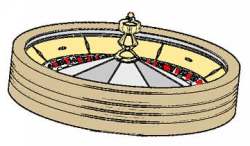Reducing radiotherapy roulette

Judging the correct dose of radiotherapy to give a patient can sometimes be a gamble - too little and the tumour isn't eradicated, too much and you damage the surrounding healthy tissue. However, application of a general mathematical technique - the Monte Carlo method - is allowing doctors to tailor the dose of radiotherapy a patient receives, depending the patient's precise anatomy.
We are each individuals, and we vary enormously from each other in the structure of our bodies' soft tissue, bone and other material. The radiation particles travelling through a patient undergoing radiotherapy behave differently in each of these types of tissue, and by taking into account the individual anatomy of a patient undergoing radiotherapy, the accuracy and efficacy of the dose can be greatly improved.
Emiliano Spezi, a medical physicist at Velindre Hospital, Cardiff, is using the Monte Carlo method - a process of using many random trials to predict the value of an unknown quantity (see Monte Carlo Monopoly from Issue 8 of Plus) - to develop computer programs modelling the exact dose of radiotherapy patients will receive. In this case, the unknown quantity is the amount of energy that the patient receives (the dose), and the random trials are the simulated paths of the radiation particles through a 3D "phantom" of the patient, created using Computed Tomography (CT) data. In the simulation, a particle from the radiotherapy source is selected randomly and its path is predicted using known physics and probability distributions governing its interaction with the patient's tissues, represented by the phantom. By performing many of these random trials researchers can accurately estimate the dosage of radiotherapy the patient will actually receive.
Spezi, along with Dr Frank Verhaegen (who is working on a separate project at the National Physical Laboratory) presented their work on Monte Carlo simulations in radiotherapy at an Institute of Physics conference in London earlier this year. "So far the large amount of computing time required for Monte Carlo technique has limited [its] use in clinical practice. But I think that the computers and the algorithms are so much better, that within a year or so Monte Carlo will become the standard method of calculations, at least for electron-based radiotherapy", says Spezi.
Using these techniques, doctors will be able to reduce the Russian roulette involved in judging radiotherapy doses, resulting in more effective treatment for cancer patients.